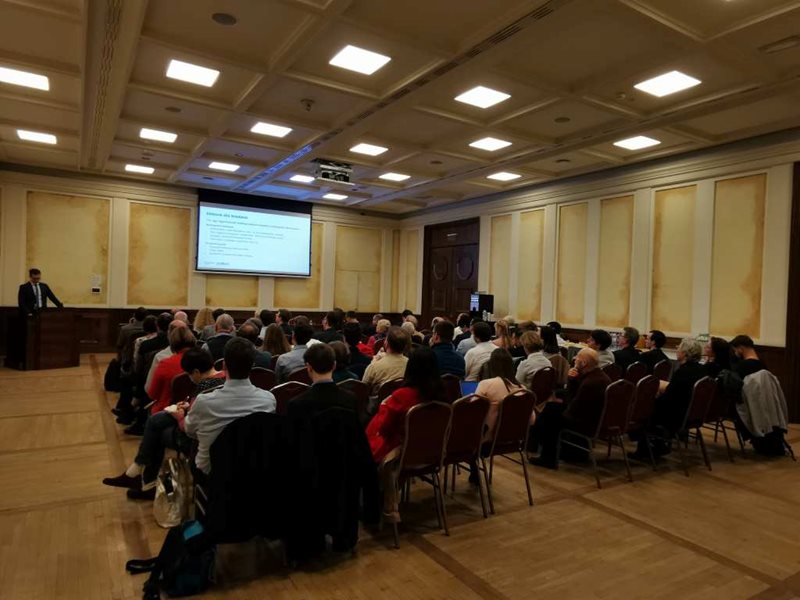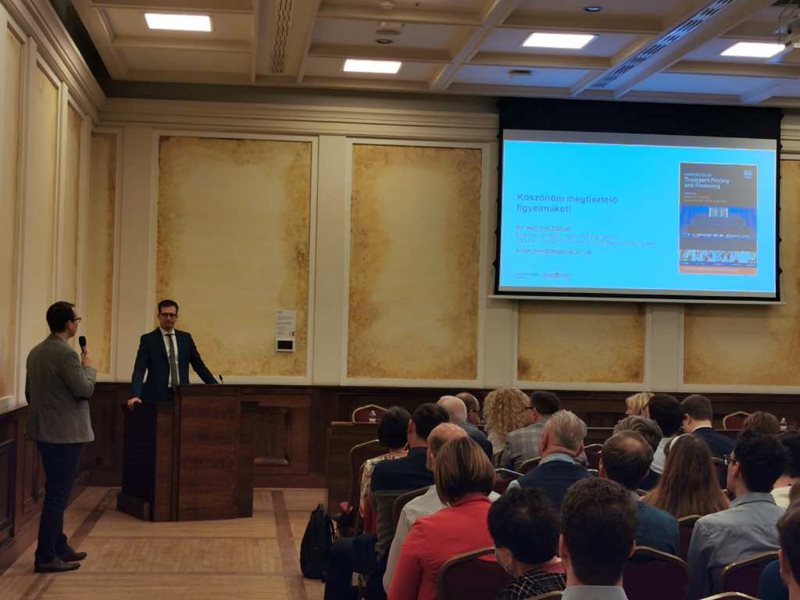Travel in science: data-driven tourism is the future
_20240305082541_0.jpg)
The seventh edition of the ‘Travel in Science’ conference was held at Corvinus on 1 March, organised by the Mobility and Tourism Research Centre (Institute for Sustainable Development). In his welcome speech, Lajos Szabó, Acting Rector said that the university was also involved in travel in a certain way, as it is almost five years since the institution has embarked on a new development path. As the Rector highlighted, the tasks ahead of the university are divided into three phases, with much still to be done before 2030. “We want to educate the responsible leaders of the future here, and our 9 bachelor study programmes are in the top 10 in the country in terms of the cut-off scores,” said the Acting Rector. He also spoke about the importance of master programmes and specialist postgraduate programmes, many of which are now in English. It is also an important goal that researchers at the university publish their scientific results in high quality journals; it is good that there are many visiting lecturers from abroad and it is fortunate that some of them stay at Corvinus. The university is a meeting point of past, present and future, as education is provided in the traditional building designed by Miklós Ybl, as well as in the “new” building, which can no longer be called new, as this adjective is used for the Gellért Campus, inaugurated last week, where the new bachelor study programmes are taught.
Then Lóránd Bói, Deputy State Secretary for Transport Strategy (Ministry of Construction and Transport), welcomed the participants (more than 140 people registered for the conference) and said that it is good that students, doctoral students and emeritus professors can meet and learn from each other on this day. The Deputy State Secretary said that the rethinking of the national transport strategy is underway, as many important factors have changed since the strategy was developed in 2014: the Covid, the war situation and the fact that there used to be abundant EU funding. Transport is a factor that influences tourism, and the aim is to create a homogeneous, uniform road network in the country – this is the case for roads, but not yet for railways. He also said that the new fare network, which came into force on the very day of the conference, will benefit 98% of passengers and could boost tourism.

More data, better targeted marketing
László Könnyid, CEO of the Hungarian Tourism Agency (MTÜ), said in his presentation that in 2023, 57% of the overnight stays in Hungary will be spent by foreigners, the rest by domestic tourism. Accommodation revenue grew by 6% more than in the previous year. Total hotel revenues also increased, reaching HUF 860 billion, 23% higher than in 2022. The data show that the different generations travelled to our country in almost equal proportions. Speaking about data-driven tourism, the CEO said that the MTÜ has already launched its data collection system in 2019. A digital platform is set up under the supervision of the National Tourism Data Centre, which will provide real-time data on all the country’s accommodation establishments and will supply software to service providers. Then, he said, you can see exactly how many German tourists spent the night in Budapest on a particular day, for example. (Of course, this is anonymous data). As the CEO stated, data-driven tourism and digitalisation are now fundamental in tourism, as it helps to make better decisions. For example, decision-makers can see pre-bookings, as well as where visitors are coming from and where tourism investments are made. In this way, you can target your campaign and get a better return on your marketing investment.
The information also helps to better decide what “product” Hungary should offer. For example, 2 nights in Hajdúszoboszló, followed by a visit to Budapest, or even Lake Balaton. The data will also help them to know exactly how people who spend more than 4 days in Balatonfüred will definitely visit nearby Tihany – so the local service sector can be supported, and local transport can be adapted accordingly. From the database, decision-makers also know the “DNA” of the visitor spending time in Budapest; they can see that the tourist visits, say, the Parliament and the Széchenyi Baths. The aim is of course also to bring tourists staying in Vienna or Prague to Budapest. The data is also useful for accommodation providers, as they can draw conclusions about what guests want and thus improve their own rental properties, but prices are also important information for those renting their holiday homes.
Physical, mental and spiritual well-being
2019 was a record year in tourism, with young people aged 15-35 visiting us in particular (45-46%), said Anna Irimiás, Associate Professor (Corvinus, Institute for Sustainable Development, Department of Tourism) in her presentation “Old/new tourism: where to go from here”. Anna Irimiás pointed out that the demographic situation also influences tourism, as the proportion of young people in a given country matters. For example, in Africa, in the Sahel, 45% of the population is young, while in European countries societies are ageing, so Germany and Italy attract older people. This is also important because travel naturally means different things to older people than to younger people, and there are differences in the latter group. In her research, the Associate Professor focused on the differences between travellers – according to their date of birth – in what they would like to see and do on a trip. The oldest (those born between 1928 and 1945, for example) prefer package holidays. The baby boomers are the loyal tourists, Generation Y travels more than their predecessors, and Generation Z has made travel a priority. Members of the alpha generation (those born after 2012) have already experienced Covid, the closures, and often travel with their parents. Irimiás has studied the travel experiences of young tourists: for them, travel is primarily about physical, mental and spiritual well-being, their identity is shaped during travelling, and they get to know themselves better.
FOMO (Fear of Missing Out) is an incredibly significant feeling among young people, as they often scroll through their phones and check what travel pictures their peers have uploaded. Irimiás quoted from a thesis where a young person describes their own sense of FOMO in this way: “The Instagram stories gave me a very strong feeling of FOMO, almost physically sick. I sat at my class, sick to my stomach and feeling left out, watching the caravanner videos, the footage from Venice and the breakfast video.”
Young people also have a travel appetite (especially during the Covid, the time of confinement) and a love of nature and animal welfare. As well as to have shared experiences: their photos are mainly about “being together and partying”, the presenter said. They are also environmentally aware, which is why they (also) like to travel by train. The development of social contacts during travelling is also important, which is why concerts and sporting events are so attractive. This is something that accommodation providers should be aware of, as they too need to respond to changing demand. It is common, for example, for a group of young people to arrive 2 hours after booking, and the owner has to adapt to this.
Afterwards, Dr. Dániel Hörcher, Research Fellow (Budapest University of Technology and Economics, Imperial College London) gave a presentation on the development lines in transport project evaluation. As he said, cost-benefit analysis has been with us for 30 years. No transport planning intervention is good for everyone, which is why economic analysis is needed. A good analysis compares the benefits, the impact of the change on infrastructure, the environment and the cost of services, but cannot say what is fair, it cannot take the responsibility for the decision away from policy. It is important to try newer and newer models for transport development, as transport changes affect businesses, the real estate market, the environment, consumption, spatial changes and travel time are important factors. The creation of a new generation of cost-benefit analysis is therefore essential, the presenter said.

The conference continued with sessions in Hungarian and English.
Katalin Török